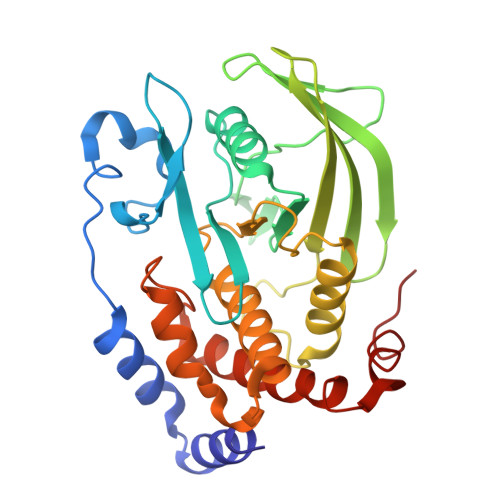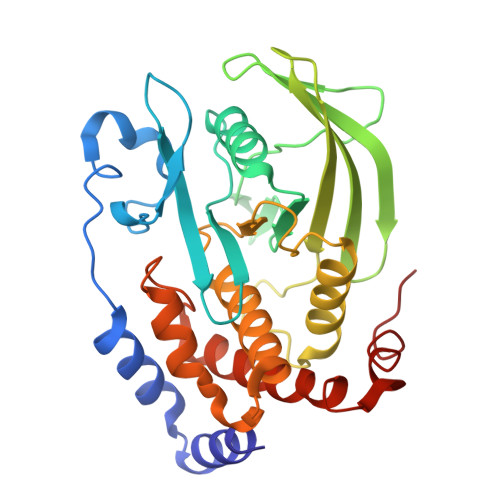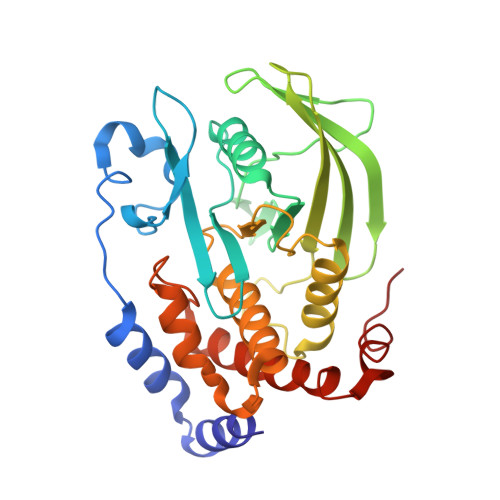The second-sphere residue T263 is important for the function and catalytic activity of PTP1B via interaction with the WPD-loop
Xiao, P., Wang, X., Wang, H.M., Fu, X.L., Cui, F.A., Yu, X., Wen, S.S., Bi, W.X., Sun, J.P.(2014) Int J Biochem Cell Biol 57C: 84-95
- PubMed: 25450460
- DOI: https://doi.org/10.1016/j.biocel.2014.10.004
- Primary Citation of Related Structures:
4QAH, 4QAP, 4QBE, 4QBW - PubMed Abstract:
Protein tyrosine phosphatases have diverse substrate specificities and intrinsic activities that lay the foundations for the fine-tuning of a phosphorylation network to precisely regulate cellular signal transduction. All classical PTPs share common catalytic mechanisms, and the important catalytic residues in the first sphere of their active sites have been well characterized. However, little attention has been paid to the second-sphere residues that are potentially important in defining the intrinsic activity and substrate specificity of PTPs. Here, we find that a conserved second-sphere residue, Thr263, located in the surface Q-loop is important for both the function and activity of PTPs. Using PTP1B as a study model, we found that mutations of Thr263 impaired the negative regulation role of PTP1B in insulin signaling. A detailed mechanistic study utilizing steady-state kinetics, Brønsted analysis and pH dependence in the presence of pNPP or phosphopeptide substrates revealed that Thr263 is required for the stabilization of the leaving group during catalysis. Further crystallographic studies and structural comparison revealed that Thr263 regulates the general acid function through modulation of the WPD-loop by the T263:F182/Y/H interaction pair, which is conserved in 26 out of 32 classical PTPs. In addition, the hydrophobic interaction between Thr263 and Arg1159 of the insulin receptor contributes to the substrate specificity of PTP1B. Taken together, our findings demonstrate the general role of the second-sphere residue Thr263 in PTP catalysis. Our findings suggest that the second sphere residues of PTP active site may play important roles in PTP-mediated function in both normal and diseased states.
Organizational Affiliation:
Key Laboratory Experimental Teratology of the Ministry of Education and Department of Biochemistry and Molecular Biology, Shandong University, School of Medicine, Jinan, Shandong, China; Shandong Provincial School Key Laboratory for Protein Science of Chronic Degenerative Diseases, Jinan, Shandong, China.
















